Tour de Reinan: Tsuruga, Mihama and Wakasa
by Raina, staff writer of japan-guide.com
| previous post |
| next post |
2016/01/25 - Tour de Reinan: Tsuruga, Mihama and Wakasa

The end of January saw me going to the southern coast of Fukui Prefecture, also known as the Reinan coast. The cities along the southern coast include Tsuruga, Mihama, Wakasa, Obama, Oi and Takahama, and all of them look over Wakasa Bay. The bay leads out to the Sea of Japan which provides bountiful fresh seafood that can be enjoyed at local restaurants and gets exported to various parts of the country. One of the main purposes of my trip was to uncover the local delicacies, and my taste buds were not disappointed at all. Umi no Sachi, which roughly translates to the bounty of the sea, i.e. seafood products, is a mainstay of the region's cuisine and makes up majority of the local specialties.
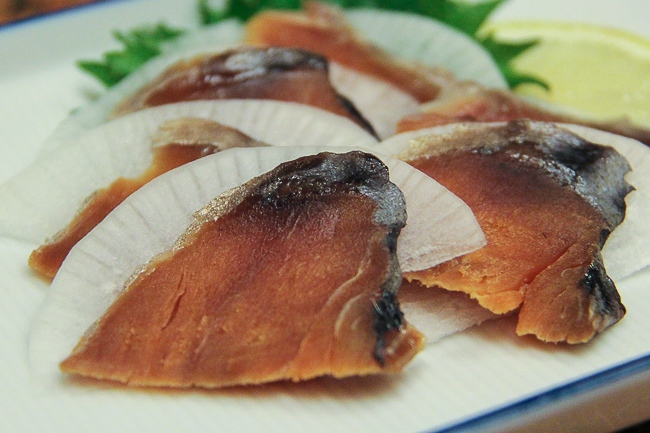
I split my visit to the Reinan Coast into two trips, the first covering Tsuruga, Mihama and Wakasa, and the second covering Obama, Oi and Takahama. Tsuruga is the typical entry point into the region, accessed by the limited express Shirasagi or Thunderbird from major cities like Osaka, Kyoto, Nagoya and Kanazawa. From Tsuruga, the JR Obama Line connects the major towns along the Reinan Coast, but rental cars are the most convenient way to navigate the area. Rental car outlets can be found around Tsuruga Station. Below is a report of the first half of my Tour de Reinan trip to Tsuruga, Mihama and Wakasa.
The attractions I visited in Tsuruga were about a 20-30 minute walk from one another - and good walkers should be able to cover everything in a day. Alternatively, the local Tsuruga loop bus provides access to the major tourist attractions. My first stop for the day was Kehi Shrine (Kehi Jingu). An almost 11 meter tall vermillion red, wooden torii gate stands guard at the start of the main approach to the shrine. I found out that the gate is one of the three greatest wooden torii in Japan alongside the ones at Itsukushima Shrine on Miyajima and Kasuga Taisha in Nara.
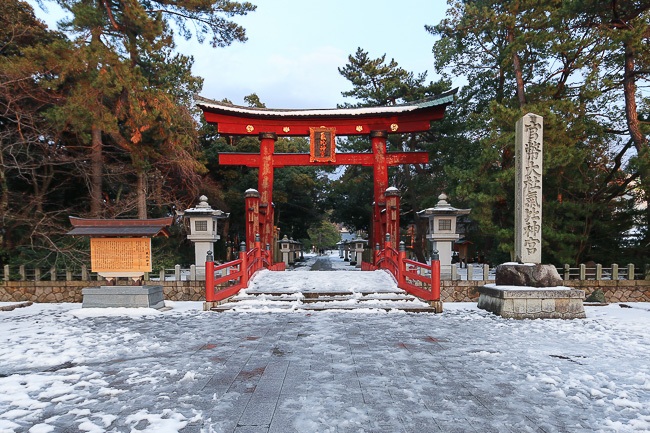
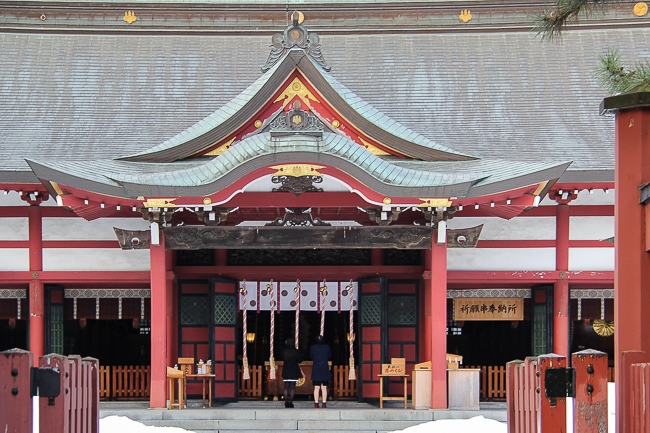
From the shrine, I headed to Tsuruga Akarenga Warehouse, a pair of former refined oil storage warehouses built in 1905 by the New York Standard Oil Company. While the buildings' outer brick walls and rafters remain in their original state, the interiors were completely renovated and house restaurants, a cafe, a souvenir shop and a train diorama. The huge diorama measures 27 meters long and 7.5 meters wide. Old maps and records - which can be perused - were used to create the model showing how Tsuruga looked back in the day. In addition to watching the diorama come to life, visitors can experience controlling some of the trains for an additional fee, as well as get up close to the diorama at certain spots.
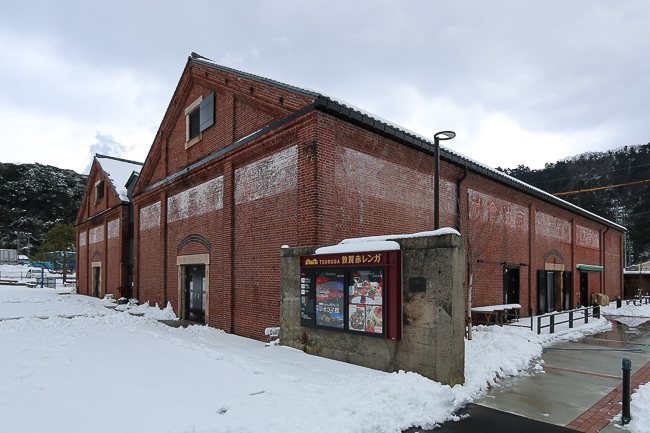
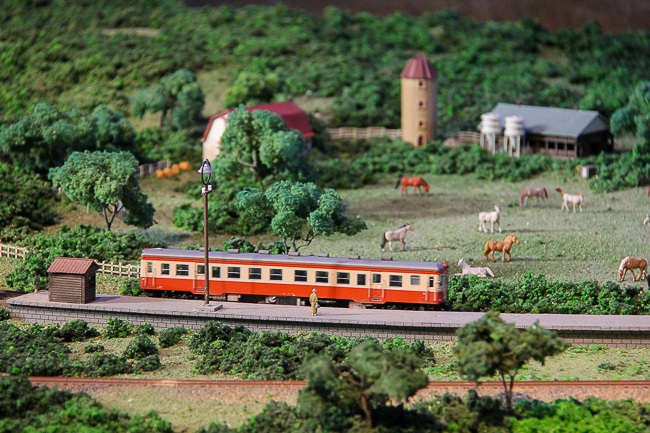
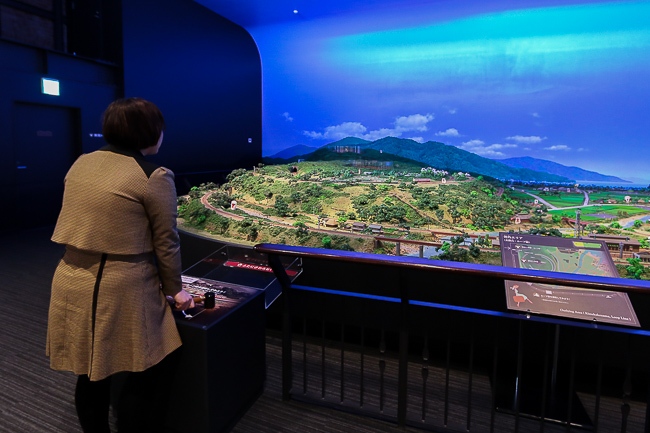
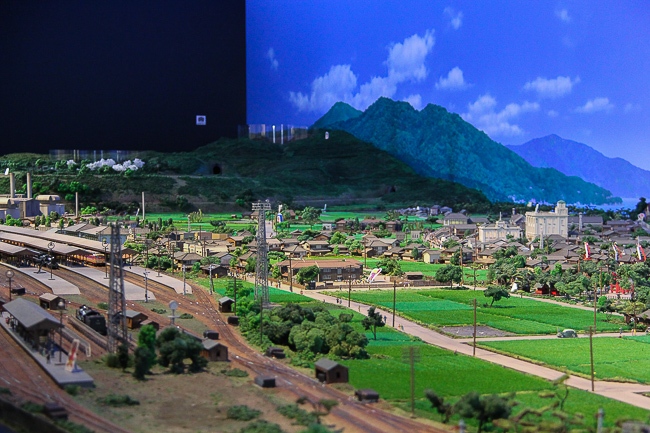
Located along the shores of Tsuruga Bay, Kehi no Matsubara, a pine grove with more than 17,000 pine trees was next on my list. This pine tree forest is one of the three greatest pine groves in the country, with Miho no Matsubara in Shizuoka and Niji no Matsubara in Karatsu rounding up the remaining top three. There is also a beach by the pine grove, though it was half covered in snow when I was there, is I'm sure, popular when summer comes around.
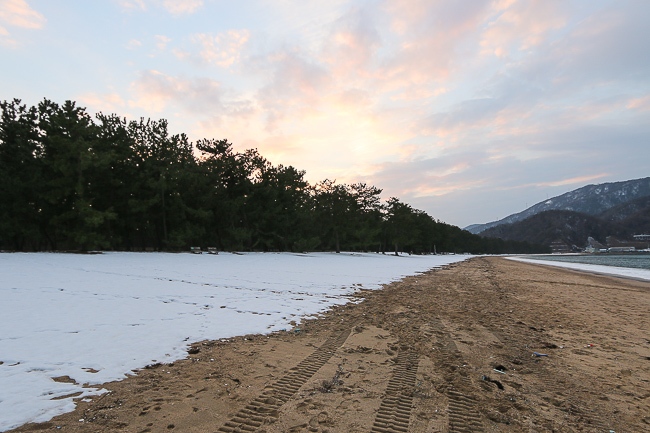
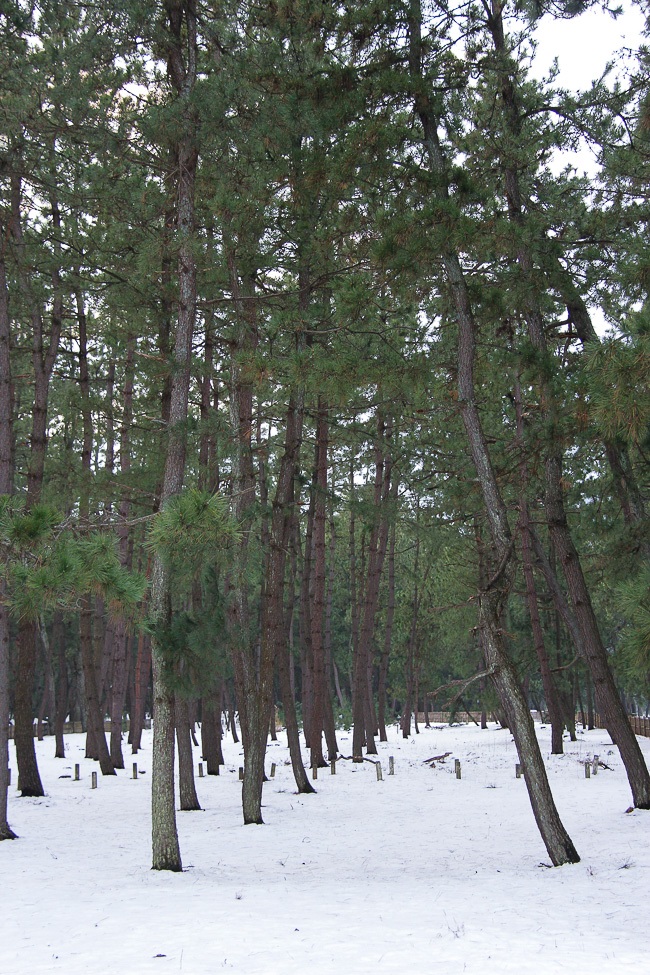
All that moving around made me hungry, and off I went to have buri-shabu, a fish version of shabu shabu where slices of yellowtail (buri) are briefly cooked in a broth. It was great to be able to have a seafood hotpot dish in the fishing market area of Tsuruga City in winter. The proprietress of Sadayoshi - a restaurant in Tsuruga City known for its buri-shabu - showed me the huge winter yellowtail (kanburi), which had been rested for about three days, she was going to prepare for my meal and explained that the fish had to be over 10 kilograms for it to be delicious. I started with kanburi sashimi to taste the fish and quickly boiled the remaining slices till they were half cooked. The fish was simply amazing, raw or half cooked, and bursting with a combination of fish oil, flavor, texture and melt-in-your-mouth goodness.
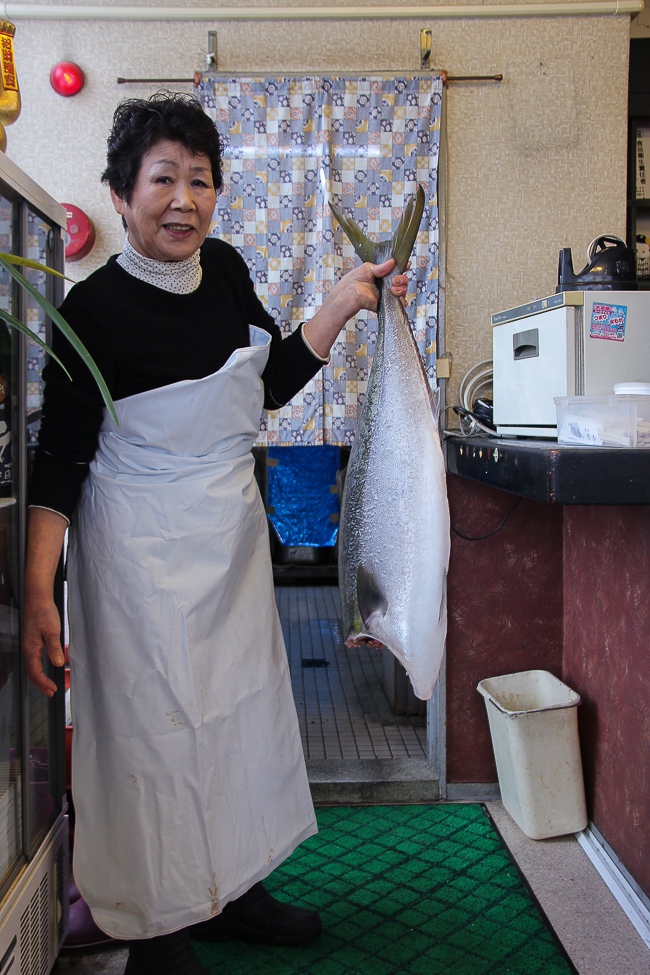
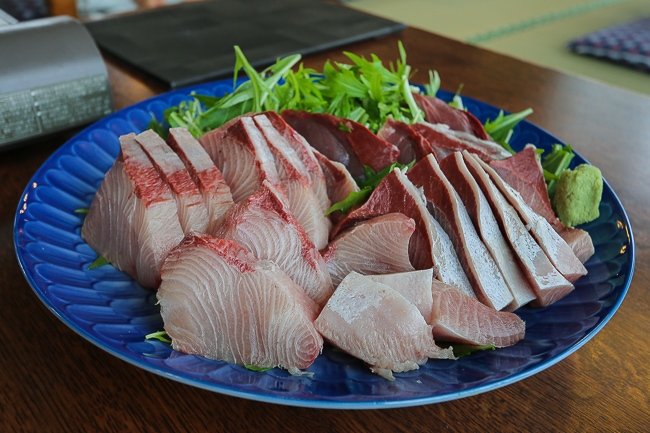
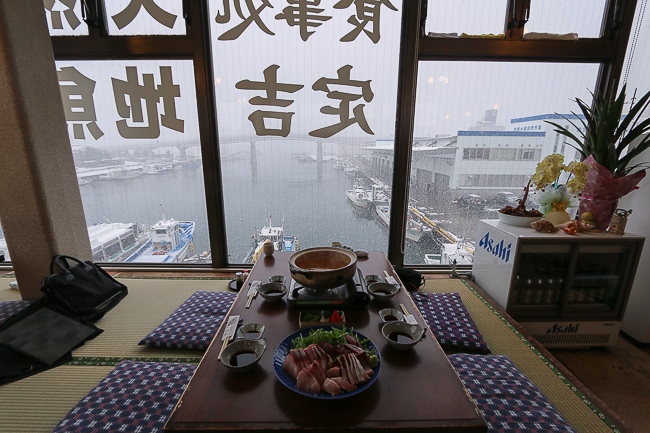
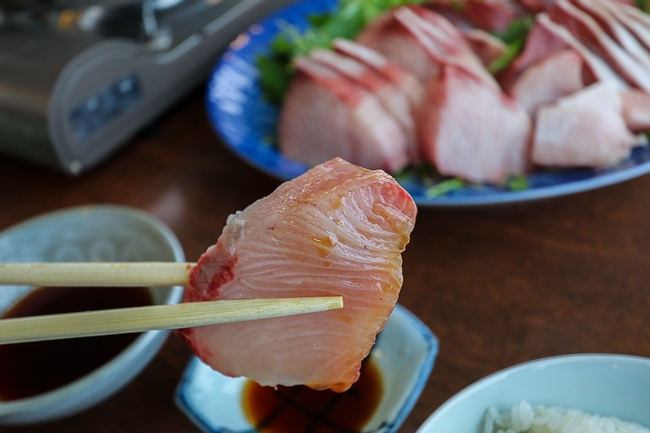
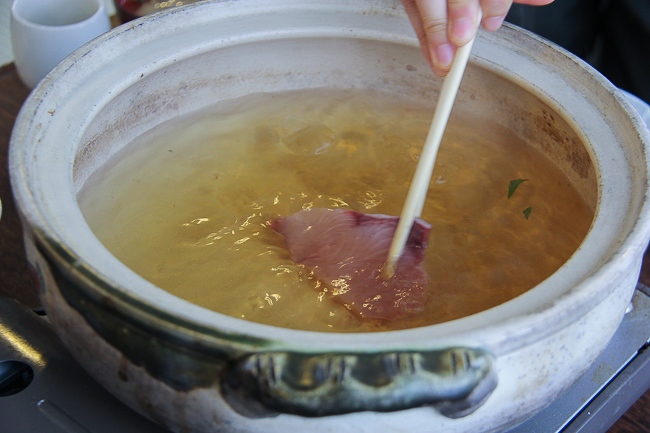
Moving on to my next food-related destination, it was time to check out some local seaweed also known in Japanese as konbu. Back in the Edo Period, the port town of Tsuruga was where seaweed from Hokkaido and northern Tohoku was offloaded to be processed and packed before being transported to Kyoto and Osaka via Lake Biwa. Even today, up to 85 percent of Oboro seaweed in Japan is processed in Tsuruga City. I visited Okui Kaiseido, a seaweed company based in Tsuruga with a history of almost 150 years, and learned a lot about the different types of konbu from my tour of their konbu plant. Who would have thought that there were different types for eating and making stock, and that seaweed could be aged just like fine wine. The company sources its kelp primarily from Hokkaido, and its best konbu is taken from the pristine waters of Rishiri and Rebun in Hokkaido. As with any high quality product, their premium seaweed is typically used for making delicate stock and costs over 15,000 yen for one kilogram!
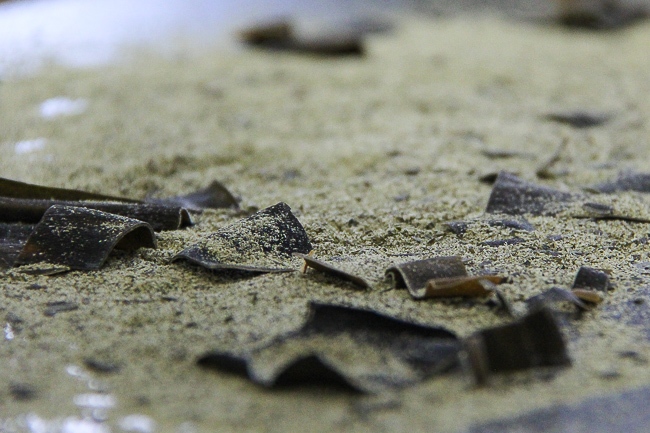
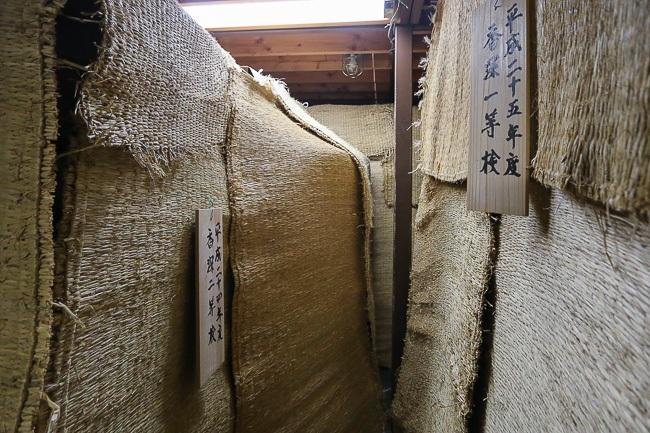
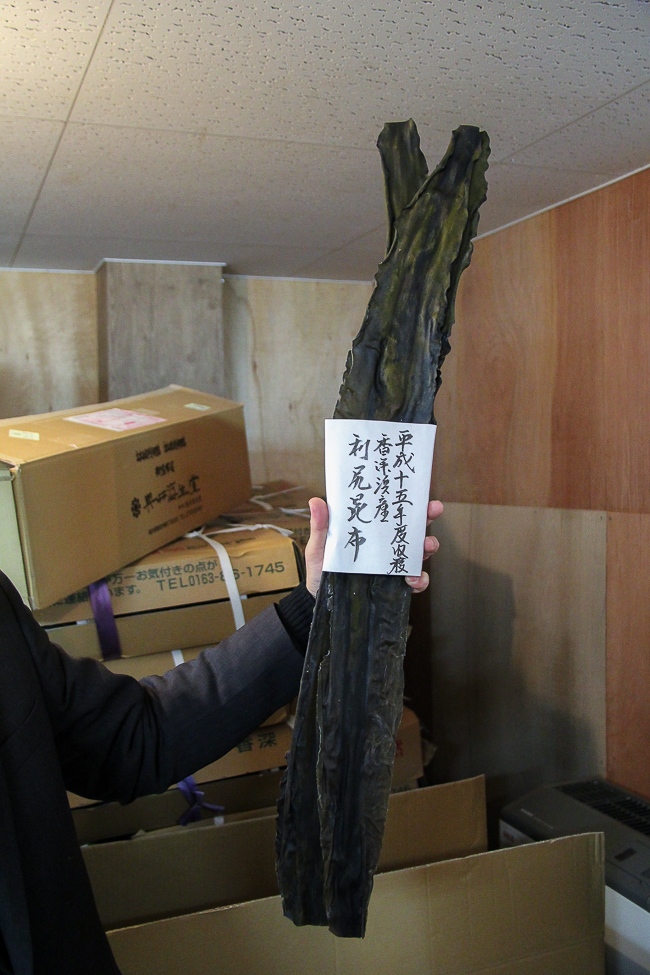
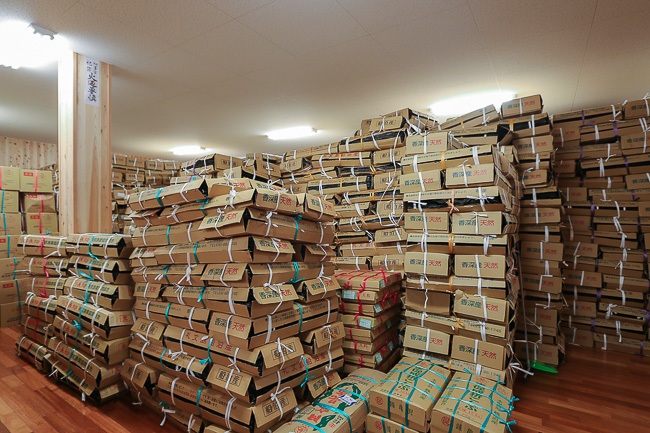
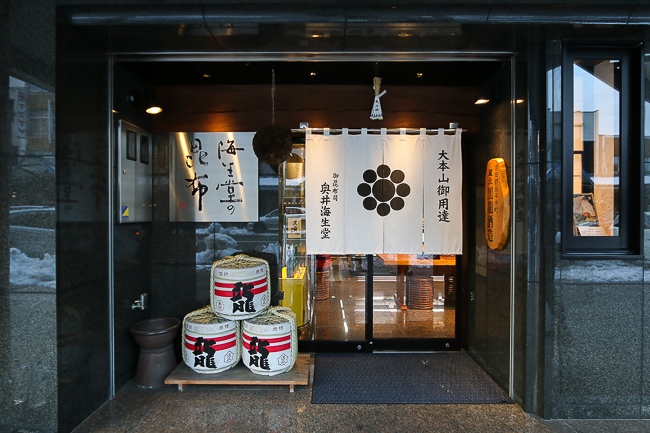
From food, my next stop was naturally going to be drink, and I headed for the Hayaseura Sake Brewery in Mihama Town. Winter is typically the time for making sake, and I was fortunate to be able to see a small part of sake production in action. Hayaseura Sake Brewery was founded in 1852, and the current brewmaster is the 22nd generation. One of the aspects of sake production at Hayaseura is that different varieties are produced to be compatible with the different seasons and seasonal foods, for example a stronger, drier variety for the autumn when oilier fish come in season or sake that would be great as hot sake (atsukan) in the winter.
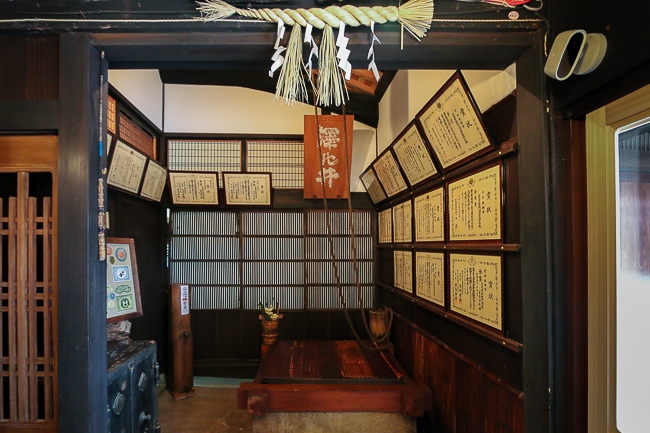
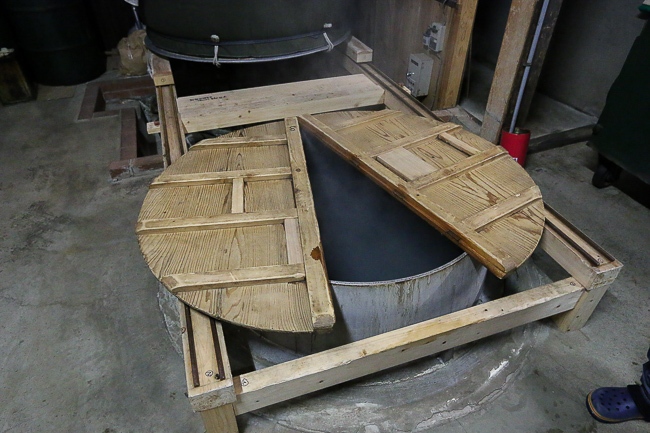
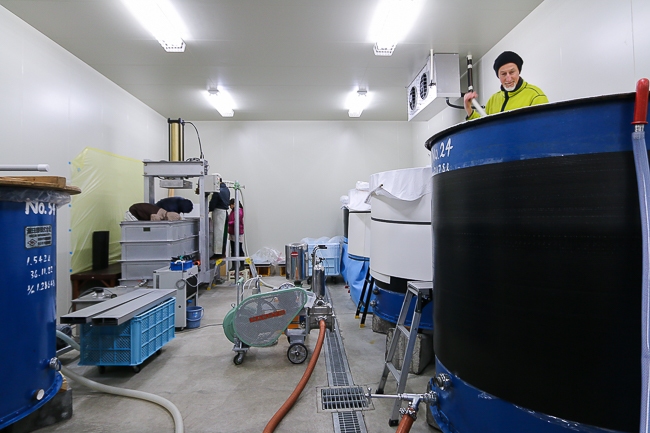
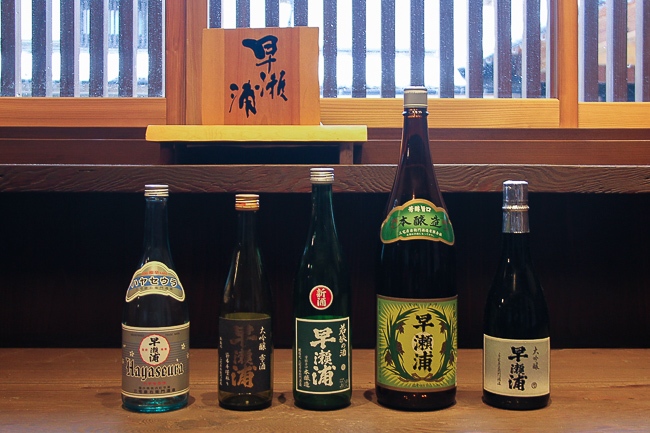
Not far from Hayaseura Sake Brewery are the Mikata Five Lakes (Mikata Goko), my last stop for the day. I arrived at the sightseeing cruise center and hopped on a boat to take a tour of four of the five lakes. The cruise takes about 40 minutes and commentary onboard was only in Japanese. The largest lake has a circumference of almost ten kilometers and a depth of about 40 meters. Along the way, I found out that the lakes are home to a bounty of fish, both saltwater and freshwater, as well as birds. Unfortunately it had started snowing when I was on the boat, but I can imagine the view of the houses along the banks to be very picturesque when the weather is good.
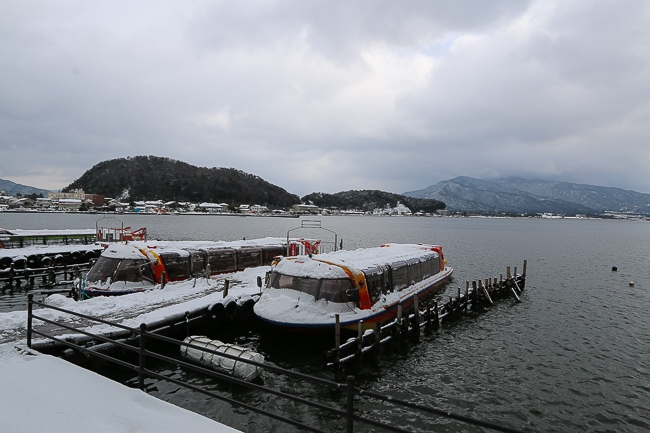
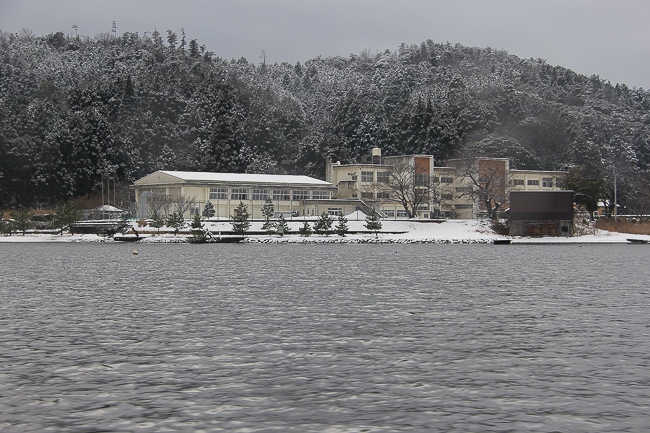
After the cruise, I called it a day and went to my minshuku accommodation in Mihama Town, Irifune, which sits on a small strip of land where the Sea of Japan meets Lake Hiruga, one of the five lakes in Mikata. The owner of Irifune was very friendly and made me feel welcomed. Plus, it was also nice to be indoors where it was warm and dry, and not outside in the freezing snow. Dinner was an extravagant affair that included a funamori platter, seafood sashimi arranged on a wooden boat; heshiko, fresh saba that has been preserved in salt and rice bran resulting in a strongly flavored fish; Echizen-gani, snow crab brought in from Echizen port; and Hayaseura sake to drink. I went to bed full and content, and ready to take on the next day.
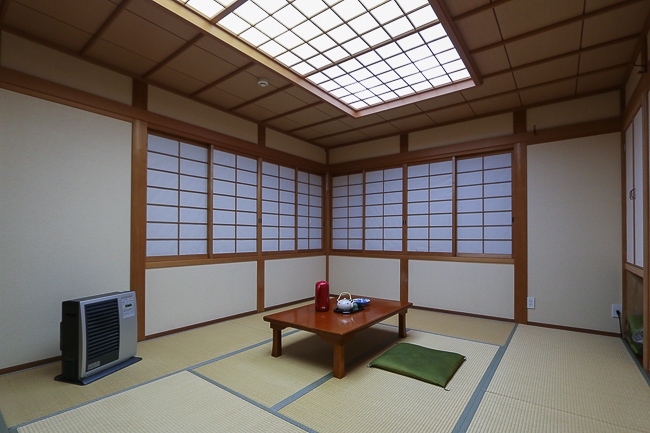
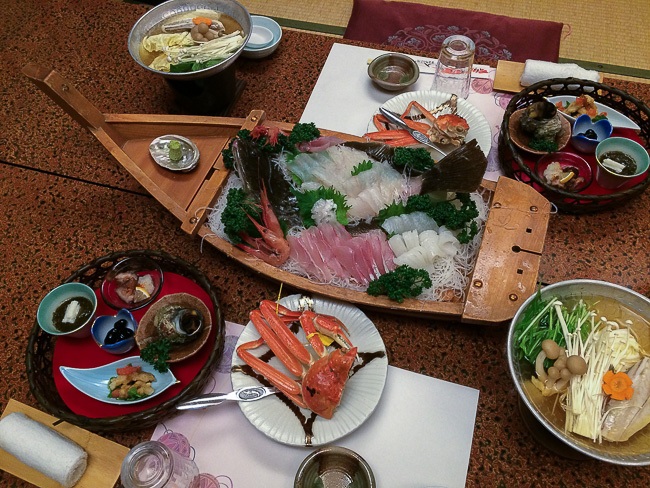
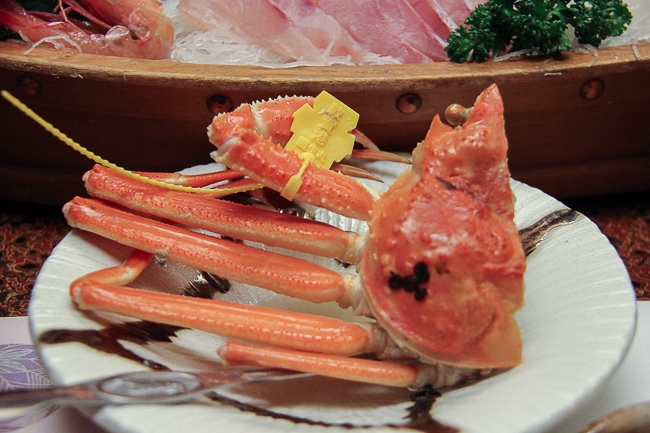
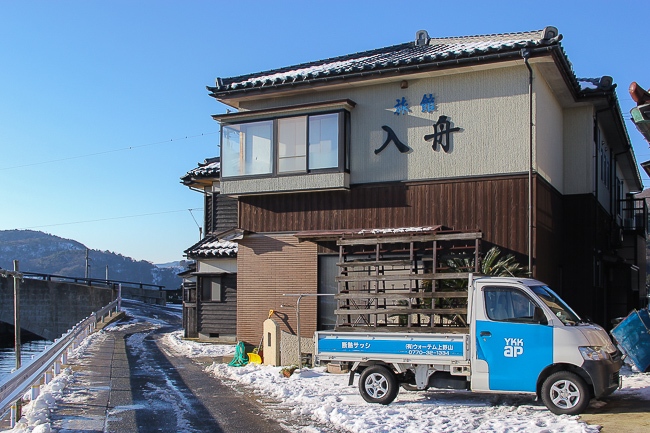
The smells of breakfast got me out of bed, and after a typical Japanese breakfast, I bid farewell to my hostess and her mum, and carried on my journey. Stepping outside, I couldn't help but take a moment to soak up my surroundings. The sun was out, the skies were blue and the air cold and crisp, fishermen were out and about doing their work. I had the Sea of Japan on one side and Lake Hiruga on the other, and everything on land was covered in a blanket of snow. The quiet moment would've been even more perfect for me had it snowed a little just then, but one cannot be too greedy.

Taking advantage of the good weather, I got on the Rainbow Line, a toll road that leads up to an observation park. The Rainbow Line is relatively windy towards the top, and those visiting in winter should drive with care as the road can get icy. From the carpark, I took the cable car up to the peak and was greeted by panoramic views of the Mikata Five Lakes. I could see all five lakes and further into the Wakasa district on the one side, the Tsunegami Peninsula and the Sea of Japan on the other. Thanks to the overnight snow, it was easy to see the contrast between land and sea. Seasonal flowers like roses are planted around the park, and other attractions include a small shrine and an area for love locks. Plenty to see and do in addition to the gorgeous scenery.
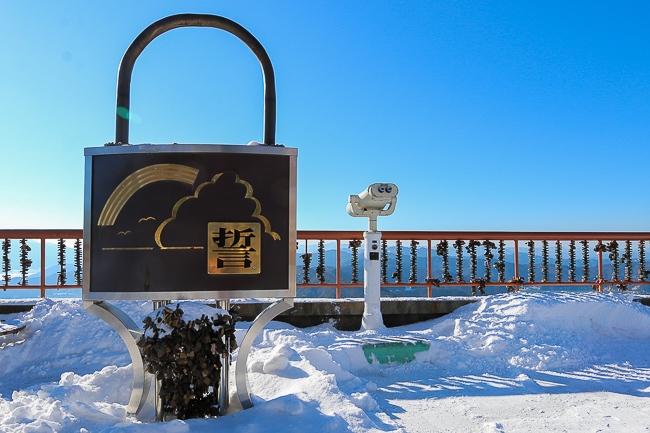
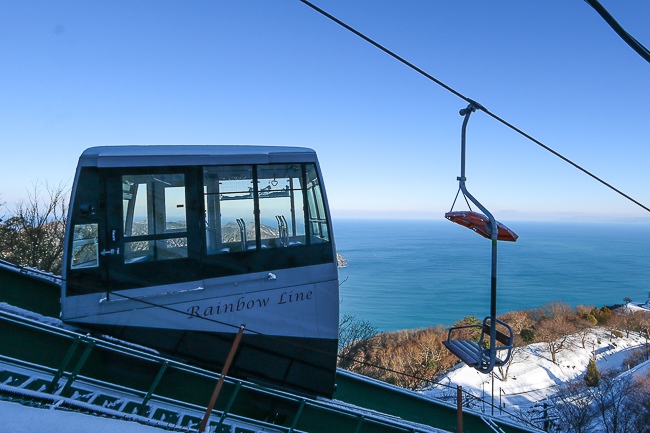
Moving on to Wakasa Town, I headed for the Wakasa Uriwari Meisui Park to check out the Uriwari Falls. Although it is only a five minutes walk through the woods to get to the falls, it felt like I was breaking new frontiers at times as I stepped on fresh snow where no one had stepped before. Rather than one huge waterfall, there are a few smaller waterfalls over the rocks. Sunlight streaming through the trees created a rather magical feel to the area and left me mesmerized for a while. The water at Wakasa Uriwari Meisui Park is famous for being minerally balanced, and anyone can fill their water containers for a small fee. In addition to the water, I heard that the kuzu-manju sold at the souvenir shop near the parking lot is a popular snack, but the shop was shut to my dismay. Next time, next time I'll get a chance.
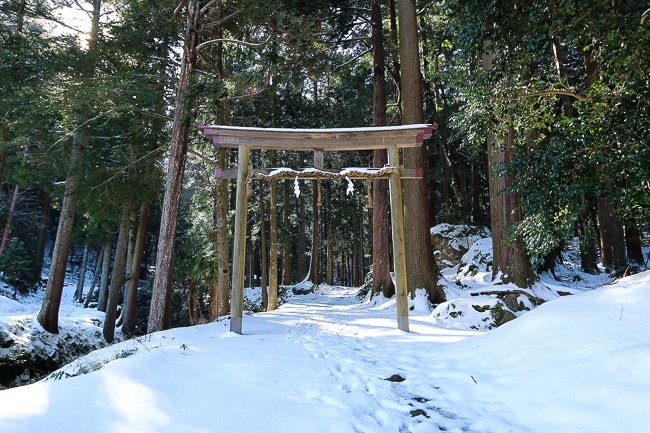
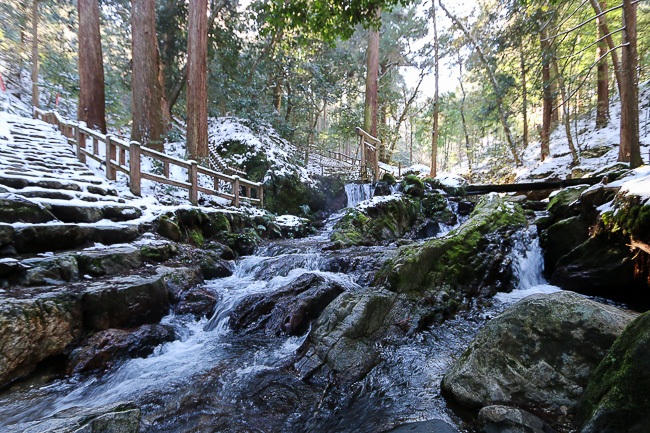
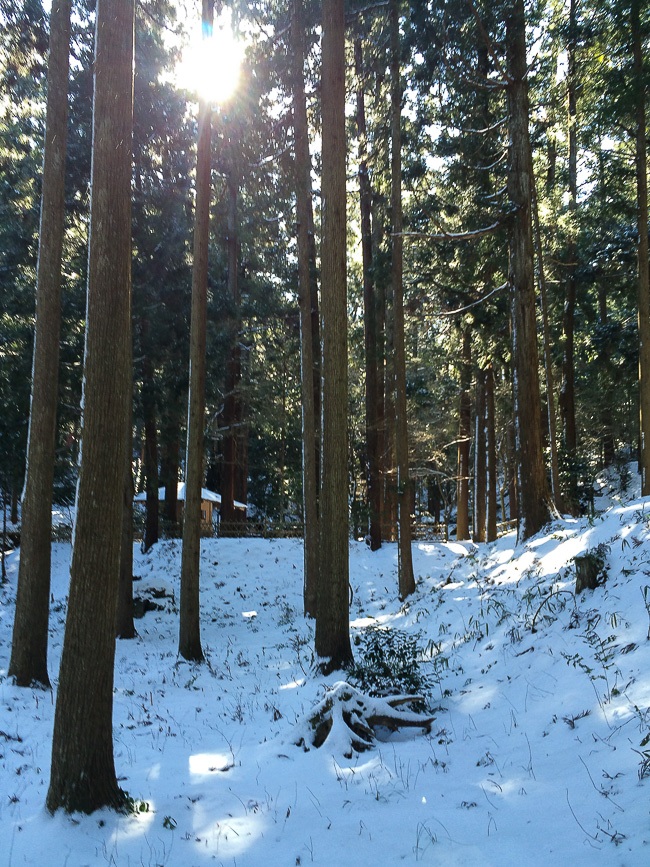
My final stop for this trip was Kumakawa-shuku, a post town along what was known as the Saba Route between Obama City and Kyoto. Transporters would load up their carts and packs and walk about 70 kilometers to deliver preserved mackerel fish (saba) amongst other foods to the capital city. I learned more about this route in my visit to Obama in my other trip. Some buildings in the post town have been converted into shops and restaurants, while others remain as historic buildings. It is quite pleasant to walk through the post town and imagine how it was back in the day without automatic vehicles for transport.
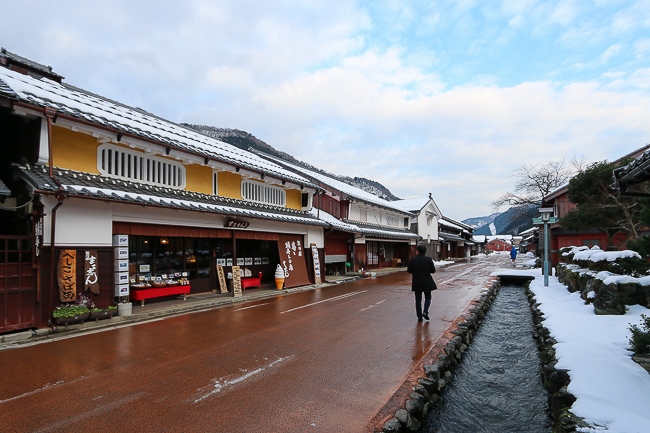
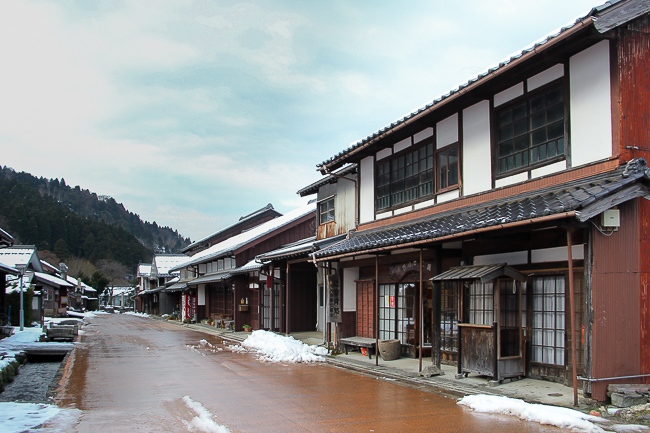
With that, I ended my first tour of the Reinan Coast covering the cities of Tsuruga, Mihama and Wakasa. It was interesting to see how seafood from the Sea of Japan made up a large part of the livelihood of the people even today; sake brewers producing local sake that paired well with the local cuisine; heshiko which probably still uses its original recipe; and all the fresh seafood that can be enjoyed in the region.
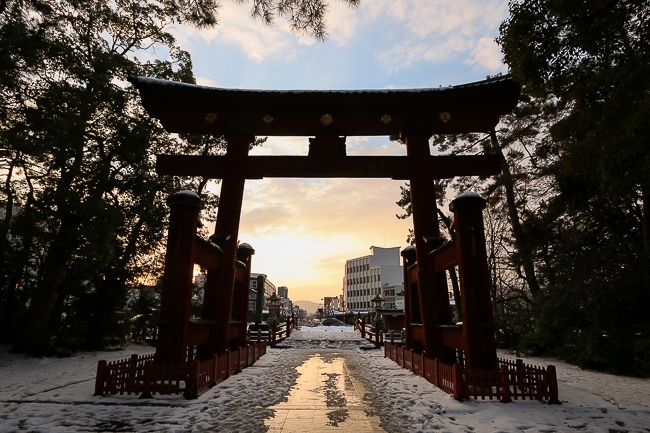
| previous post |
| next post |